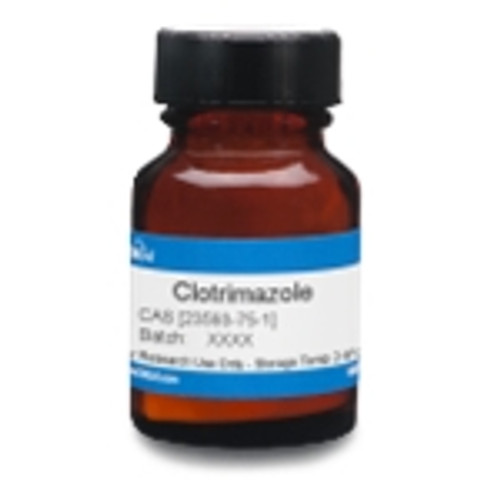Clotrimazole is a broad-spectrum antifungal belonging to the imidazole subclass of azole compounds. These compounds interfere with the biosynthesis of ergosterol, a major membrane component of the fungal cytoplasmic membrane. Clotrimazole was discovered in 1969 and was developed by Schering Plough. It inhibits Ca2+-activated potassium channels and has promising anti-cancer effects. Clotrimazole is also a reversible inhibitor of several cytochrome P450 (CYP450) isoforms. In vitro-based CYP450 enzyme inhibition screening has been used to evaluate compound interactions.
This product is considered a dangerous good. Quantities above 1 g may be subject to additional shipping fees. Please contact us for details.



